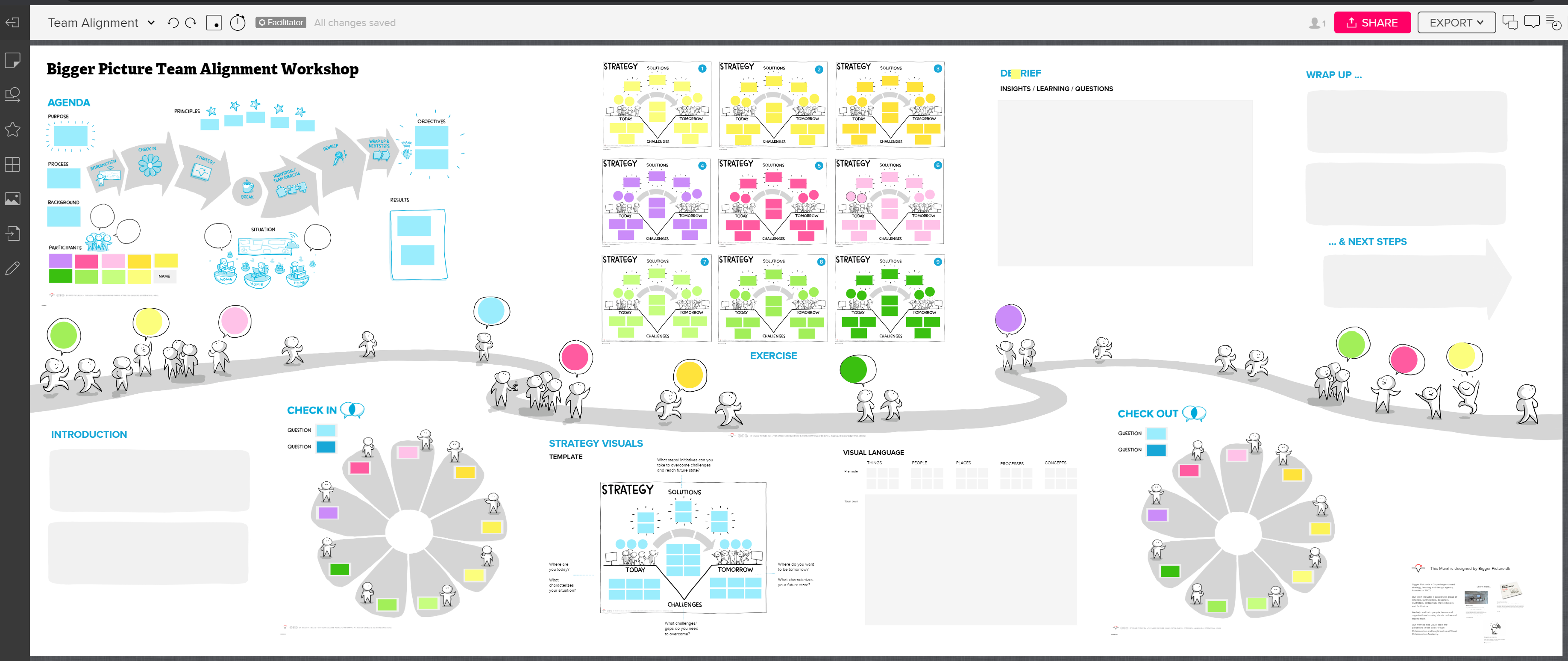Drawings and visualization increase the bandwidth of collaboration because we can literally see what each other means when we make our conversations visible. This is particularly valuable when conducting meetings and workshops remotely. Non-verbal communication cues often get lost in translation during online meetings, and it can be challenging to stay focused with a high level of engagement when we're not physically in the same room. Using visualization and drawing does not fix all challenges of remote collaboration, but it does:
- Create clarity: A drawing can challenge, adjust, and redefine original understanding because the content of the drawing is an abstract idea made concrete.
- Show listening: When we draw what other people are saying, we show them we're listening.
- Promote memory: When we hear information, we are likely to remember 10% of it three days later. Add an image, and retention jumps up to 65%.

When we work remotely - and as of now, most of us are only working remotely - a strong and disciplined meeting culture is paramount. We need to plan for and actively facilitate our meetings, and that is where an online collaboration platform like MURAL becomes essential.
Building shared murals by mapping content and clustering sticky notes has been shown to improve efficiency across both large and small teams. MURAL has a large number of pre-made templates for you to structure your next meeting and an icon library to choose a picture that best emphasize the meaning you want to express.
How do you do it?
Sometimes your meeting purpose doesn’t fit exactly into one of the pre-made templates or the icons don't quite match the way you want to illustrate a concept. That's ok. You can draw, and you can do it directly on your own blank mural or on any pre-made template.
Start by practicing combining these basic shapes: a dot, a line, a triangle a square, a circle and a wave.

With these, you can quickly sketch things like a computer, a compass, a magnifier, a funnel or a light bulb.
Drawing with basic shapes is an easy, rapid, and intuitive way of visualizing and you only need to illustrate a fraction of what the eye sees to create recognition and understanding from others.

L-R: funnel, computer, lightbulb, compass, graph
Once you start practicing drawing easy objects, you'll start to see the world through a lens of basic shapes -while expanding your visual vocabulary along the way.
Try this: Think of a word you want to represent visually and draw it as simply as you can. Or, think of a complex concept that you often find yourself explaining to others; how would you draw it? Does it contain people, places and processes? If so, you may want to learn the Seven Elements.

This system helps you create a visual language for meetings, processes and projects, whatever their content. Combine the Seven Elements into larger visualizations relevant to you, and use them in tandem with the basic shapes to create icons or templates that are easy to draw during your next MURAL collaboration session.
Using Simple Drawings When You Collaborate Online
There are many ways you can work visually in your MURAL, regardless if you're a MURAL expert or a beginner.
Here are four different ways to get started:
- Draw directly in MURAL using a digital pen on your tablet or pc.
- Create a post-it and sketch directly on it using a digital pen on your tablet or pc.
- Insert drawings made in other software or make a drawing on a piece of paper and take a picture, add the picture to your MURAL.
- Insert pre-made visual templates where everyone can add content. Go to MURAL template (link) and find a template that fits your purpose or learn how to create your own.
Create your own templates
Use these five visual tools to develop and reinforce your approach to visual work:
1) Discover your own visual language
2) Design you next remote meeting or workshop
3) Define the key questions you want to answer with your team
4) Create engaging templates
5) Prepare to scale your process
Want to learn more?
- Check out Bigger Picture's Visual Collaboration Academy. You can strengthen your remote visual collaboration skills here with online video-courses and free webinars.
- Get Ole and Loa's book (or a free chapter and nine visual tools) here. All tools can be used in MURAL.

- Bigger Picture has designed this Team Alignment template available in MURAL. Click “create canvas from template” and unlock all elements to customize the template to fit your own process.

--
Bigger Picture is a Copenhagen-based strategy, learning and design agency, founded in 2003. They help and train people, teams and organizations in using visuals online and face to face.
Their method and visual tools are presented in the book Visual Collaboration and taught online at Visual Collaboration Academy.
About the authors
About the authors



%20(3).jpg)
%20(1).jpg)
%20(1).jpg)

